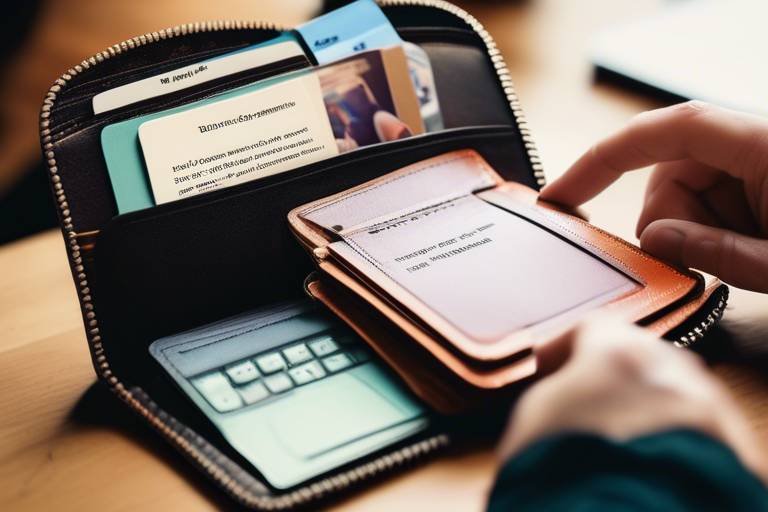Understanding Wallet Encryption - What You Need to Know
In today's digital age, where cryptocurrencies are becoming increasingly popular, understanding wallet encryption is essential for anyone looking to protect their digital assets. Imagine your wallet as a treasure chest filled with valuable coins—would you leave it unlocked for anyone to rummage through? Of course not! Similarly, wallet encryption acts as the lock to your digital treasure chest, ensuring that only you can access your hard-earned cryptocurrencies. This article delves into the significance of wallet encryption, its mechanisms, and the best practices to secure your digital assets against unauthorized access and potential threats.
Wallet encryption refers to the process of securing a digital wallet with cryptographic techniques. Think of it as a strongbox for your digital currency, where only those who possess the correct key can enter. It ensures that only authorized users can access their cryptocurrencies and sensitive information, effectively safeguarding them from prying eyes. When you encrypt your wallet, you're transforming your private keys into a form that is unreadable to anyone who doesn't have the decryption key. This is crucial in a world where cyber threats lurk around every corner.
So, why is encryption so important? Well, consider this: without it, your digital assets are as vulnerable as an open wallet lying on a park bench. Encryption is crucial for protecting digital assets from theft and unauthorized access, making it a vital component in maintaining the security and integrity of cryptocurrencies. By encrypting your wallet, you're not only fortifying your assets against hackers but also ensuring peace of mind. After all, the last thing you want is to wake up one day and find your digital fortune has vanished!
Understanding the technical aspects of encryption helps users appreciate its role in safeguarding their wallets and the methods used to protect their private keys. At its core, wallet encryption uses algorithms to scramble your data, making it unreadable to anyone who lacks the proper credentials. This process involves transforming your private keys into a format that is meaningless without the correct decryption key. It’s like turning a clear message into a secret code that only you and those you trust can decipher.
When discussing wallet encryption, it’s essential to differentiate between symmetric and asymmetric encryption. In symmetric encryption, the same key is used for both encryption and decryption—think of it as a single key that locks and unlocks your treasure chest. On the other hand, asymmetric encryption uses a pair of keys: a public key, which anyone can use to send you encrypted messages, and a private key, which only you possess to decrypt those messages. This dual-key system adds an extra layer of security, making it harder for unauthorized users to access your wallet.
Hash functions play a critical role in wallet encryption. They provide a way to securely store passwords and verify data integrity without exposing sensitive information. When you create a password for your wallet, it gets transformed into a fixed-length string of characters through a hash function. This means that even if someone gains access to the hashed password, they cannot easily reverse it to discover your actual password. It’s like having a secret recipe where only the final dish is visible, but the ingredients remain hidden.
Various methods exist for encrypting wallets, each with its own strengths and weaknesses. Some popular techniques include:
- Software Wallets: These are applications that encrypt your keys on your device. They are user-friendly but can be vulnerable if your device is compromised.
- Hardware Wallets: These are physical devices that store your keys offline, providing a higher level of security against online threats.
- Paper Wallets: These involve printing your keys on paper, which can be safe from online threats but risks physical loss or damage.
Understanding these options can help users choose the right approach for their needs, ensuring that their digital assets remain secure.
Implementing best practices for wallet security can significantly reduce the risk of unauthorized access and potential loss of digital assets. Here are a few key strategies:
A strong password is the first line of defense against unauthorized access. Here are some tips for creating and managing secure passwords for your wallet:
- Use a mix of upper and lower case letters, numbers, and special characters.
- Avoid using easily guessable information such as birthdays or names.
- Consider using a password manager to keep track of your complex passwords.
Keeping wallet software up to date is crucial for maintaining security, as updates often include important patches and improvements to encryption protocols. Just like you wouldn’t ignore updates on your smartphone, don’t overlook them for your wallet software. These updates can protect you from newly discovered vulnerabilities and help ensure that your encryption remains robust against evolving threats.
Despite encryption, digital wallets face various risks. Understanding these threats can help users take proactive measures to safeguard their assets. One of the most common threats is phishing attacks, where cybercriminals attempt to trick users into providing their private keys or passwords. Awareness and education are key to avoiding these scams.
Phishing attacks remain a common threat, targeting users to gain access to their wallets. These attacks can come in the form of emails, fake websites, or even direct messages on social media. Always double-check URLs and be cautious of unsolicited communications asking for sensitive information. Remember, if it seems too good to be true, it probably is!
Malware can compromise wallet security by capturing sensitive information. Keyloggers, for instance, record your keystrokes, potentially exposing your passwords and private keys. Users must adopt protective measures, such as using antivirus software and avoiding suspicious downloads, to minimize the risk of infection.
As technology evolves, so does wallet encryption. Emerging trends and advancements may shape the future of digital asset security. Innovations like quantum computing pose potential challenges to current encryption methods, prompting the development of more advanced techniques. Staying informed about these changes will be crucial for anyone looking to protect their digital wealth in the future.
Q: What is the best way to encrypt my wallet?
A: The best way to encrypt your wallet depends on your needs. Hardware wallets offer great security, while software wallets provide convenience.
Q: How often should I update my wallet software?
A: It's best to update your wallet software as soon as updates are available to ensure you're protected against the latest vulnerabilities.
Q: Can I recover my wallet if I forget my password?
A: If you forget your password and don’t have a backup, recovering your wallet may be impossible. Always keep a secure backup of your passwords.
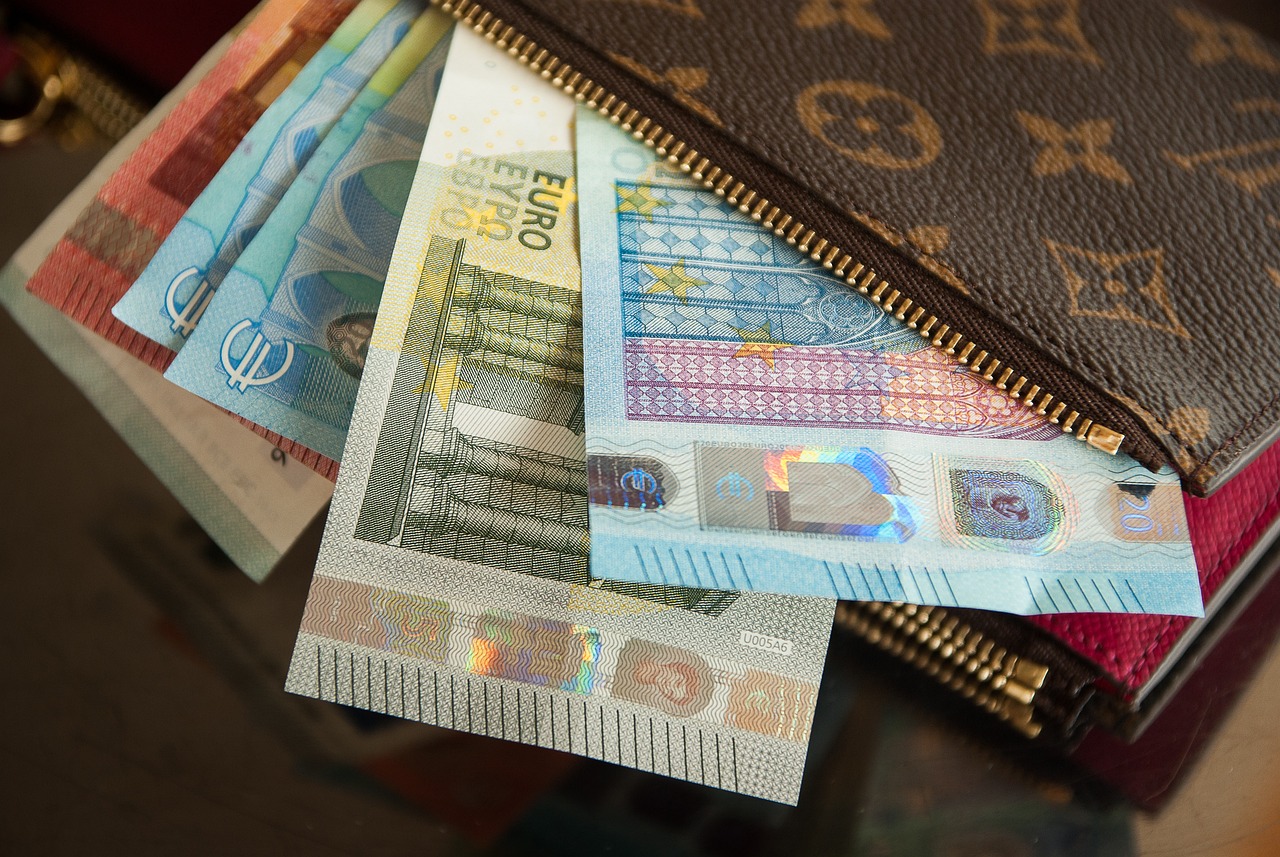
What is Wallet Encryption?
Wallet encryption is a crucial process in the realm of digital currencies, designed to protect your digital assets from unauthorized access. At its core, it involves using cryptographic techniques to secure a digital wallet, ensuring that only those with the right credentials can access their cryptocurrencies and sensitive information. Imagine your digital wallet as a treasure chest filled with valuable coins; without a strong lock, anyone can simply take what they want. Wallet encryption serves as that robust lock, providing peace of mind to users in an increasingly digital world.
When you think about it, the digital landscape is much like a bustling marketplace. While it offers countless opportunities, it also attracts potential thieves and hackers looking to exploit vulnerabilities. This is where wallet encryption steps in as a guardian of your assets. By encrypting your wallet, you create a barrier that makes it significantly harder for unauthorized individuals to gain access. The process involves transforming your sensitive data into a coded format that can only be unlocked with a specific key or password. In essence, even if someone manages to get hold of your wallet, they would only see gibberish without the correct decryption key.
Wallet encryption not only protects your cryptocurrencies but also secures other sensitive information, such as private keys and personal identification details. This multi-layered protection is vital, especially in a world where cyber threats are constantly evolving. To put it simply, wallet encryption is like a safety deposit box for your digital wealth. Just as you would rely on a bank to keep your valuables secure, you can trust encryption to safeguard your digital assets.
In addition to protecting your assets, wallet encryption also enhances your privacy. By encrypting your wallet, you ensure that your transaction history and account balances remain confidential. This is especially important in a world where data breaches and identity theft are rampant. When you encrypt your wallet, you are essentially putting a "Do Not Disturb" sign on your digital life, signaling to prying eyes that your information is off-limits.
In summary, wallet encryption is not just a technical necessity; it's a fundamental practice for anyone looking to navigate the world of cryptocurrencies safely. By understanding what wallet encryption is and how it functions, you empower yourself to take control of your digital assets. So, the next time you think about your digital wallet, remember that encryption is your first line of defense against potential threats.
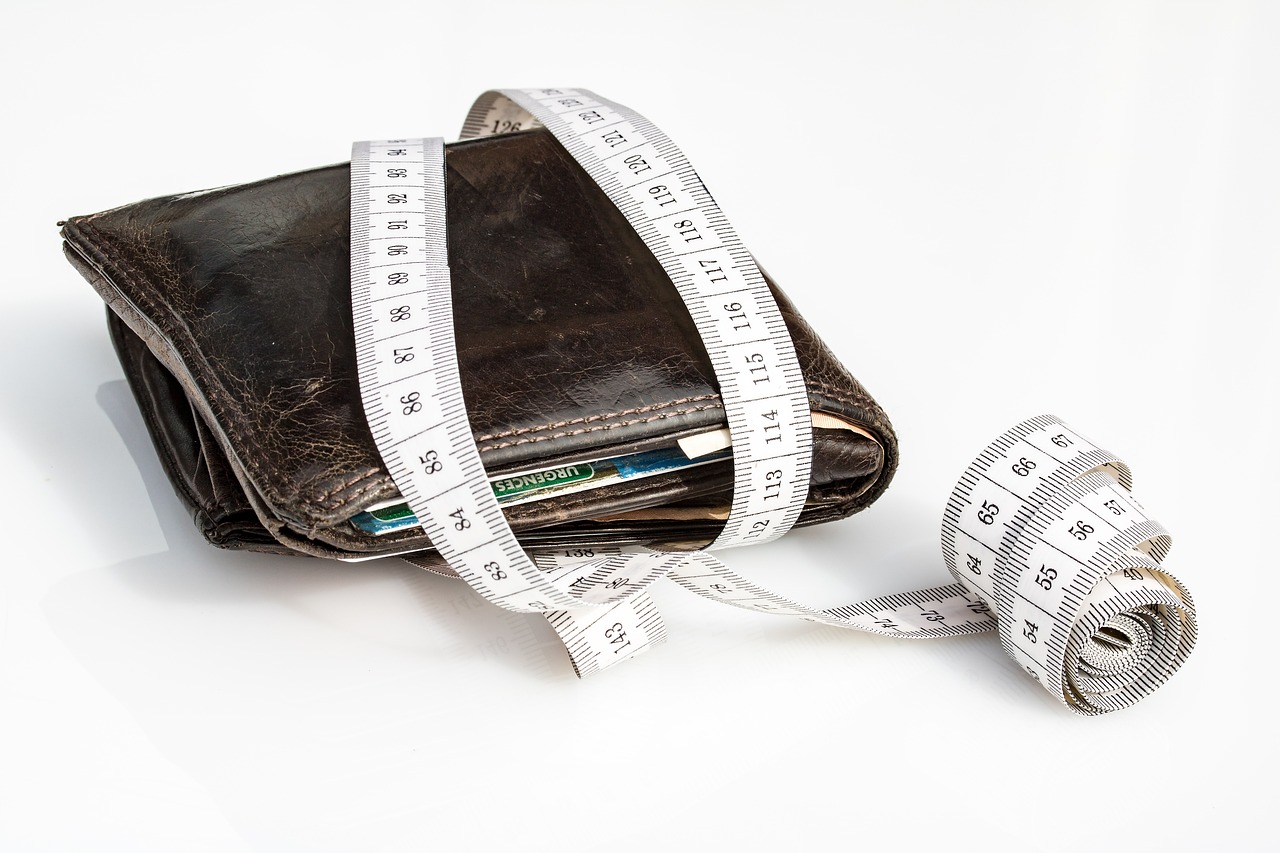
Importance of Wallet Encryption
In today's digital age, where cryptocurrencies are becoming increasingly popular, the cannot be overstated. Imagine your digital wallet as a treasure chest filled with valuable assets, and encryption as the lock that keeps it secure. Without this lock, anyone could easily access your treasures, leading to potential theft and loss. Wallet encryption acts as a shield, protecting your cryptocurrencies from unauthorized access and ensuring that only you hold the key to your assets.
One of the most significant reasons for utilizing wallet encryption is to defend against the ever-growing threat of cybercrime. With hackers constantly developing new methods to infiltrate digital wallets, having a robust encryption protocol in place is essential. The use of encryption not only secures your wallet but also enhances the overall integrity of your digital assets. It provides a layer of security that is vital in a landscape where the risks of theft and fraud are prevalent.
Furthermore, wallet encryption plays a crucial role in maintaining user privacy. When you encrypt your wallet, you are not just protecting your funds; you are also safeguarding your personal information from prying eyes. In a world where data breaches are becoming all too common, this aspect of wallet encryption is invaluable. It ensures that your sensitive data, such as transaction history and account balances, remains confidential.
To illustrate the importance of wallet encryption, consider the following table that highlights the potential consequences of inadequate security measures:
| Scenario | Potential Consequences |
|---|---|
| Unencrypted Wallet | Theft of funds, loss of assets, exposure of personal information |
| Encrypted Wallet | Protected funds, enhanced privacy, reduced risk of unauthorized access |
In summary, wallet encryption is not just a technical necessity; it is a fundamental aspect of safeguarding your digital assets. By implementing strong encryption practices, you are taking proactive steps to protect yourself from potential threats, ensuring that your cryptocurrencies remain secure and your personal information stays private. Remember, in the world of digital currencies, security is paramount, and wallet encryption is your first line of defense.
- What is wallet encryption? Wallet encryption is the process of securing a digital wallet using cryptographic techniques to prevent unauthorized access.
- Why is wallet encryption important? It protects your digital assets from theft and unauthorized access, ensuring the security and integrity of your cryptocurrencies.
- How does encryption enhance privacy? Encryption safeguards your personal information and transaction history from being exposed to potential threats.
- What are the risks of not using wallet encryption? Without encryption, your wallet is vulnerable to theft, loss of assets, and exposure of sensitive information.

How Encryption Works
Encryption is like a digital lock and key for your wallet, ensuring that only you can access your precious cryptocurrencies. At its core, encryption transforms readable data into an unreadable format, making it nearly impossible for unauthorized users to decipher. This process involves complex algorithms and keys, which are essentially long strings of characters used to encrypt and decrypt data. Think of it as a secret language that only you and your wallet can understand.
To appreciate how encryption works, it's essential to understand the two primary types of encryption: symmetric and asymmetric. In symmetric encryption, the same key is used for both encryption and decryption. This means you need to keep that key secure, as anyone with access to it can unlock your wallet. On the other hand, asymmetric encryption uses a pair of keys: a public key, which anyone can see, and a private key, which you must keep secret. This method enhances security, as even if someone knows your public key, they cannot access your wallet without your private key.
Another critical aspect of wallet encryption is the use of hash functions. Hash functions take an input (like your password) and produce a fixed-size string of characters, which appears random. This string is unique to the input, meaning that even a tiny change in the input will result in a completely different hash. It’s a one-way street; you can’t reverse the hash back to the original password, which adds an extra layer of security. In this way, even if someone gains access to the hashed password, they cannot retrieve the original password.
To illustrate how these components work together, consider the following table:
| Type of Encryption | Key Usage | Security Level |
|---|---|---|
| Symmetric Encryption | Single Key | Moderate |
| Asymmetric Encryption | Public and Private Keys | High |
In conclusion, understanding how encryption works is vital for anyone looking to secure their digital assets. By utilizing both symmetric and asymmetric encryption along with robust hash functions, you can significantly enhance your wallet's security. Remember, the more layers of protection you have, the harder it becomes for potential attackers to breach your defenses. So, equip yourself with knowledge and make informed decisions about your wallet's security.
- What is the best way to protect my wallet? Always use strong, unique passwords and enable two-factor authentication.
- Can I recover my wallet if I forget my password? If your wallet is encrypted and you forget the password, recovery can be challenging, if not impossible, without a backup.
- Is wallet encryption foolproof? While encryption greatly enhances security, no system is entirely foolproof. Staying vigilant against threats is crucial.
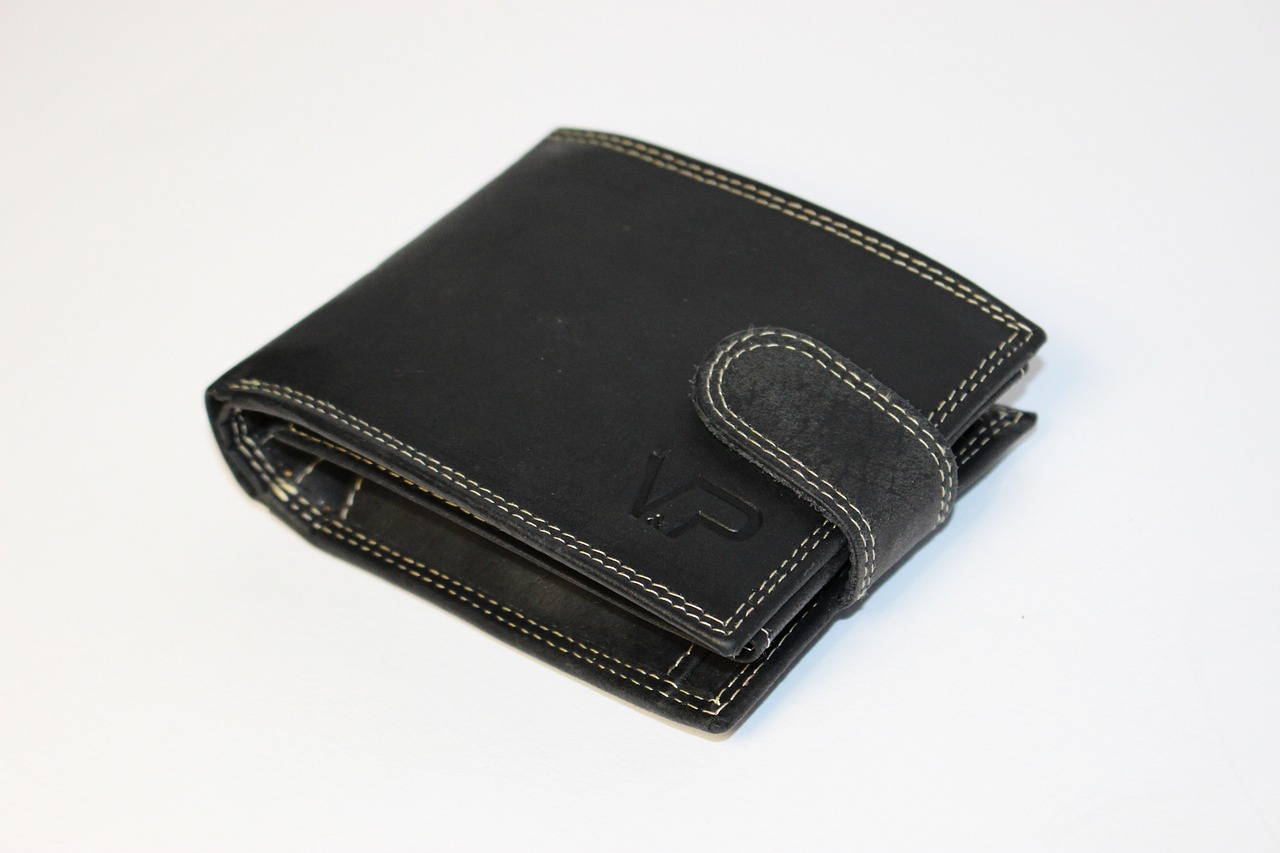
Symmetric vs. Asymmetric Encryption
When it comes to securing your digital wallet, understanding the difference between symmetric and asymmetric encryption is crucial. Think of symmetric encryption as a locked box that only you and a trusted friend have the key to. In this method, the same key is used for both encrypting and decrypting the data. This makes it fast and efficient, particularly for large amounts of data. However, the challenge lies in securely sharing that key. If someone else gets their hands on it, they can access your sensitive information without any hassle.
On the other hand, asymmetric encryption takes a different approach, much like a digital mailbox. Here, you have a public key that anyone can use to send you encrypted messages, but only you have the private key that can unlock those messages. This method employs a pair of keys: one public and one private. While it is generally slower than symmetric encryption, it offers a higher level of security for transactions, making it ideal for protecting your wallet. The beauty of asymmetric encryption lies in its ability to allow secure communications without the need to share a secret key.
To further illustrate the differences, let’s take a look at the following table:
| Feature | Symmetric Encryption | Asymmetric Encryption |
|---|---|---|
| Key Usage | Single key for both encryption and decryption | Pair of keys (public and private) |
| Speed | Faster | Slower |
| Security Level | Moderate (key sharing risk) | High (no key sharing needed) |
| Common Use Cases | Encrypting large data sets | Secure communications, digital signatures |
In summary, both symmetric and asymmetric encryption have their strengths and weaknesses. The choice between them often depends on the specific needs of the user. If speed is your top priority and you can manage key security, symmetric encryption might be the way to go. However, if you value security and don’t mind a little extra processing time, then asymmetric encryption is your best bet. Understanding these differences not only helps you better protect your digital assets but also empowers you to make informed decisions about your wallet security.
- What is the main advantage of asymmetric encryption? The primary advantage is that it does not require the sharing of a secret key, which significantly reduces the risk of unauthorized access.
- Can symmetric encryption be used for securing wallets? Yes, symmetric encryption can be used, but it requires careful management of the encryption key to prevent unauthorized access.
- Which encryption method is more commonly used in cryptocurrency? Asymmetric encryption is more commonly used in cryptocurrency transactions due to its enhanced security features.

Hash Functions in Wallet Encryption
Hash functions play a crucial role in wallet encryption, serving as the backbone for securely storing sensitive information such as passwords and private keys. But what exactly is a hash function? In simple terms, a hash function takes an input (or 'message') and produces a fixed-size string of characters, which is typically a sequence of numbers and letters. This output is known as the hash value or hash code. The fascinating part? Even the slightest change in the input will result in a completely different hash value, making it nearly impossible to reverse-engineer the original data from the hash.
When it comes to wallets, hash functions ensure that even if a hacker gains access to the hashed data, they won't be able to decipher the original information. This is because hash functions are designed to be one-way; they can generate a hash from data, but you can't easily retrieve the original data from that hash. This characteristic is what makes hash functions indispensable in the realm of digital security.
To illustrate the importance of hash functions in wallet encryption, consider the following key points:
- Data Integrity: Hash functions help verify that the data has not been altered. If the hash of the original data matches the hash of the retrieved data, you can be confident that the data is intact.
- Secure Password Storage: Instead of storing passwords in plain text, wallets store the hash of the password. When a user logs in, the system hashes the entered password and compares it to the stored hash.
- Resistance to Collision: A good hash function minimizes the chances of two different inputs producing the same hash output, which is crucial for maintaining security.
Common hash functions used in wallet encryption include SHA-256 and bcrypt. SHA-256 is widely known for its speed and efficiency, making it a popular choice for many cryptocurrencies. On the other hand, bcrypt is designed to be computationally intensive, which adds an extra layer of security against brute-force attacks.
In summary, hash functions are not just technical jargon; they are essential tools in the arsenal of wallet encryption. By ensuring data integrity, protecting passwords, and resisting collisions, they help users maintain a secure environment for their digital assets. As we continue to navigate the complex world of cryptocurrencies, understanding the role of hash functions can empower users to make informed decisions regarding their wallet security.
What is a hash function?
A hash function is a mathematical algorithm that transforms input data into a fixed-size string of characters, which is typically a sequence of numbers and letters, known as a hash value.
Why are hash functions important in wallet encryption?
Hash functions are crucial because they ensure that sensitive information like passwords is stored securely and cannot be easily retrieved or altered, thus protecting users' digital assets.
What are some common hash functions used in wallets?
Some commonly used hash functions include SHA-256 and bcrypt, each offering different levels of security and performance.
Can hash functions be reversed?
No, hash functions are designed to be one-way, meaning you cannot easily retrieve the original input from the hash output.
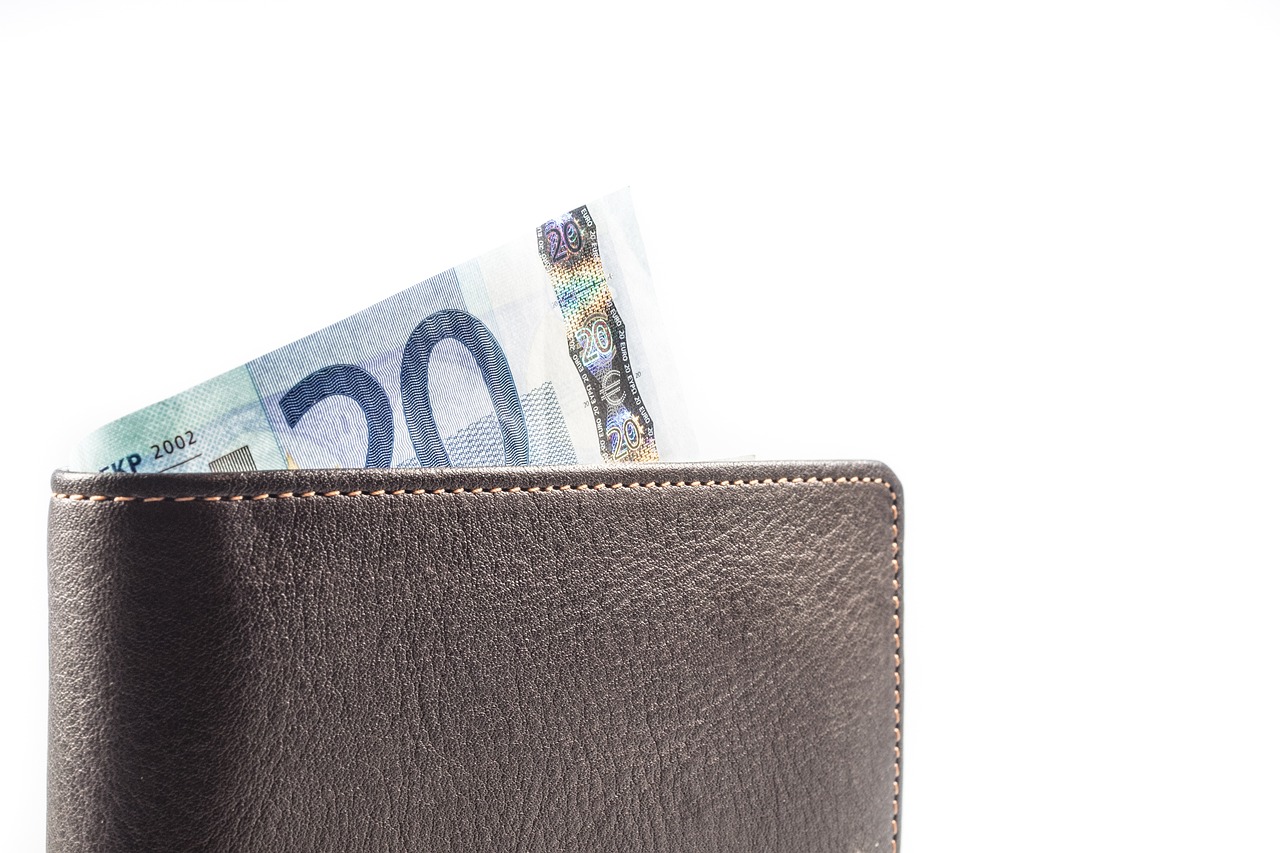
Common Wallet Encryption Methods
When it comes to securing your digital assets, understanding the various wallet encryption methods is essential. Each method comes with its own set of advantages and drawbacks, making it crucial for users to choose wisely based on their needs. Let's explore some of the most common wallet encryption techniques that can help protect your cryptocurrencies.
One of the most popular methods is password-based encryption. This technique involves encrypting your wallet with a password that only you know. The effectiveness of this method largely depends on the strength of the password. A weak password can easily be cracked, leaving your assets vulnerable. Therefore, using a combination of upper and lower case letters, numbers, and special characters is recommended. For example, a password like G7!pQr2@xY3 is significantly stronger than password123.
Another widely used method is hardware wallet encryption. Hardware wallets store your private keys on a physical device, which is disconnected from the internet when not in use. This method is incredibly secure because it minimizes the risk of online threats. However, it's essential to keep your hardware wallet in a safe place to prevent physical theft. Imagine your wallet as a safe deposit box in a bank—it's secure, but you still need to protect the key!
Multi-signature wallets are also gaining traction in the cryptocurrency community. This method requires multiple signatures (or private keys) to authorize a transaction, making it much harder for unauthorized users to access your funds. For instance, a multi-signature wallet might require three out of five designated users to approve a transaction. This adds an extra layer of security, particularly for businesses or groups managing shared funds.
Additionally, cloud-based wallet encryption offers convenience for users who prefer to access their wallets from multiple devices. However, this method often involves storing your keys on a cloud server, which can expose you to risks if the server is compromised. Therefore, it's vital to choose reputable providers who prioritize security and use strong encryption protocols.
To summarize, here are some common wallet encryption methods:
- Password-based encryption
- Hardware wallet encryption
- Multi-signature wallets
- Cloud-based wallet encryption
Each method has its pros and cons, and the best choice depends on your individual needs and risk tolerance. Always remember that no method is foolproof, so continuous vigilance and adopting best practices are essential for safeguarding your digital assets.
Q: What is the most secure wallet encryption method?
A: Hardware wallet encryption is generally considered one of the most secure methods because it keeps your private keys offline, minimizing exposure to online threats.
Q: How can I create a strong password for my wallet?
A: Use a mix of upper and lower case letters, numbers, and special characters. Aim for at least 12 characters and avoid common phrases or easily guessable information.
Q: What should I do if I forget my wallet password?
A: Many wallets offer recovery options, such as recovery phrases or backup keys. Make sure to store these securely. If all else fails, you may lose access to your funds.
Q: Are multi-signature wallets worth the extra complexity?
A: Yes, especially for businesses or shared accounts. The additional security provided by requiring multiple approvals can significantly reduce the risk of unauthorized transactions.

Best Practices for Wallet Security
When it comes to securing your digital assets, implementing best practices for wallet security is absolutely essential. Think of your digital wallet as a treasure chest; if you don’t lock it up properly, anyone can come along and take what’s yours. So, what can you do to fortify your fortress? Let's dive into some of the most effective strategies that will help you keep your cryptocurrencies safe and sound.
First and foremost, choosing strong passwords is your first line of defense. A weak password is like leaving your front door wide open; it invites trouble. So, how do you create a strong password? Aim for a mix of upper and lower case letters, numbers, and special characters. The longer, the better! Ideally, your password should be at least 12 characters long. To make it easier to remember, consider using a passphrase—a sentence or a combination of words that are meaningful to you but hard for others to guess.
Once you’ve crafted a strong password, it’s crucial to manage it properly. Using a password manager can be a game-changer. These tools not only store your passwords securely but can also generate complex passwords for you. This way, you don’t have to remember every single one, and you can avoid the temptation of reusing passwords across different platforms.
Another key aspect of wallet security is regular software updates. Just like your phone or computer, wallet software needs to be updated to patch vulnerabilities. Developers are constantly working to improve security protocols, so when an update comes out, don’t ignore it! Make it a habit to check for updates regularly. This simple step can significantly reduce the risk of being hacked.
Additionally, consider implementing two-factor authentication (2FA). This adds an extra layer of security by requiring a second form of verification, such as a code sent to your mobile device, in addition to your password. Even if someone manages to get your password, they would still need that second factor to gain access to your wallet. It’s like having a second lock on your door—definitely worth the extra effort!
Lastly, always be cautious about where you access your wallet. Avoid public Wi-Fi networks when dealing with your cryptocurrencies, as they can be breeding grounds for hackers. If you must use public Wi-Fi, consider using a VPN (Virtual Private Network) to encrypt your internet connection. This way, even if someone tries to snoop on your activity, they won’t be able to see what you’re doing.
In summary, by following these best practices—crafting strong passwords, keeping your software up to date, utilizing two-factor authentication, and being cautious with your internet connection—you can significantly enhance the security of your digital wallet. Remember, in the world of cryptocurrencies, an ounce of prevention is worth a pound of cure!
- What is the best type of wallet for beginners?
For beginners, a mobile wallet is often the most user-friendly option. However, hardware wallets provide enhanced security for those who are more serious about protecting their assets.
- How often should I update my wallet software?
It's advisable to check for updates at least once a month or whenever you hear about a new security patch.
- Is it safe to use a password manager?
Yes, reputable password managers use strong encryption to keep your passwords safe, making them a secure option for managing your credentials.

Choosing Strong Passwords
When it comes to wallet security, choosing a strong password is your first line of defense. Think of your password as the key to your digital vault; if it’s weak, anyone can waltz right in and take what’s yours. So, how do you create a password that’s not just a jumble of characters, but a fortress against intruders? It’s all about complexity, length, and uniqueness!
A strong password typically contains a mix of uppercase letters, lowercase letters, numbers, and special characters. The longer your password, the harder it is to crack. Aim for at least 12-16 characters. Here’s a quick breakdown of what makes a password strong:
| Criteria | Importance |
|---|---|
| Length | The longer, the better. 12-16 characters is ideal. |
| Complexity | Use a mix of letters, numbers, and symbols. |
| Uniqueness | Avoid using the same password across multiple sites. |
Another essential tip is to avoid using easily guessable information. Your name, birthday, or anything related to your personal life should be off-limits. Instead, consider using a passphrase—a series of random words strung together. For example, “BlueElephant!Dance3” is much stronger than “John123.” Plus, it’s easier to remember!
To keep your passwords secure, consider using a password manager. These tools can generate and store complex passwords for you, so you don’t have to memorize them all. This not only saves you time but also ensures that your passwords are robust and unique.
Lastly, remember to change your passwords regularly. Just like you wouldn’t leave your front door unlocked for too long, don’t let your digital wallet stay vulnerable. Set a reminder to update your passwords every few months. It may seem tedious, but it’s a small price to pay for peace of mind.
In summary, is crucial for protecting your digital assets. By following these guidelines, you can significantly reduce the risk of unauthorized access to your wallet. Stay vigilant and proactive, because in the world of cryptocurrencies, security is everything!
- What makes a password strong? A strong password is long, complex, and unique, combining letters, numbers, and symbols.
- How often should I change my password? It’s recommended to change your password every 3-6 months for optimal security.
- Is it safe to use a password manager? Yes, password managers are designed to keep your passwords secure and can generate strong passwords for you.

Regular Software Updates
Keeping your wallet software up to date is not just a good practice; it's a critical necessity for ensuring the security of your digital assets. Think of your wallet software as a fortress. Just like any fortress, it needs regular maintenance to fend off new threats. Every time a software update is released, it typically contains patches for security vulnerabilities, improvements to existing features, and sometimes even new functionalities that can enhance your overall experience. Ignoring these updates is akin to leaving a door wide open in your digital fortress, inviting potential intruders in.
Moreover, the landscape of cyber threats is constantly evolving. Hackers are always on the lookout for weaknesses to exploit, and outdated software is a prime target. When you update your wallet software, you are not just fixing bugs; you are actively fortifying your defenses against the latest attacks. For instance, recent updates may include enhanced encryption protocols or the latest anti-phishing measures that can protect you from increasingly sophisticated scams.
It's also worth noting that many software developers actively monitor the security landscape and respond quickly to emerging threats. By updating your wallet software regularly, you are ensuring that you benefit from the latest advancements in security technology. So, how do you stay on top of these updates? Here are a few tips:
- Enable Automatic Updates: Most wallet software offers an option to enable automatic updates. This way, you don't have to worry about manually checking for updates.
- Subscribe to Notifications: Sign up for notifications from your wallet provider to stay informed about new updates and security patches.
- Regularly Check the Official Website: Even if you have automatic updates enabled, it's a good idea to periodically check the official website for any critical updates that may require your immediate attention.
In conclusion, regular software updates are your first line of defense against potential threats. They ensure that your wallet remains secure, functional, and up-to-date with the latest security measures. So, don’t wait until it’s too late; make it a habit to check for updates regularly and keep your digital assets safe!
1. Why are software updates important for wallet security?
Software updates often include security patches that fix vulnerabilities, making it harder for hackers to exploit your wallet.
2. How often should I update my wallet software?
You should check for updates regularly, ideally enabling automatic updates to ensure you always have the latest version.
3. What should I do if I encounter issues after an update?
If you experience problems after an update, consult the support section of your wallet provider's website for troubleshooting tips or contact their customer support.
4. Can I still use my wallet if I don’t update it?
While you can technically continue using an outdated wallet, it significantly increases your risk of exposure to security threats.
5. What are the signs that I need to update my wallet software?
Look for notifications from your wallet provider, or check the official website for announcements regarding updates and new features.

Potential Risks and Threats
In the world of digital currencies, wallet encryption is a crucial shield against unauthorized access and theft. However, it's essential to recognize that even the most sophisticated encryption methods are not foolproof. Various risks and threats can compromise wallet security, leading to potential losses that can be devastating. Understanding these risks is the first step toward safeguarding your digital assets.
One of the most prevalent threats to digital wallets is phishing attacks. These attacks often masquerade as legitimate communications from trusted sources, such as wallet providers or cryptocurrency exchanges. Phishing attempts can occur through emails, fake websites, or even social media messages, tricking users into revealing their private keys or passwords. For instance, a user might receive an email that looks exactly like it’s from their wallet provider, urging them to log in to verify their account. This is where vigilance becomes paramount; recognizing the signs of a phishing attempt can save you from falling victim to such scams.
Another significant threat comes from malware and keyloggers. Cybercriminals deploy these malicious software programs to infiltrate devices and capture sensitive information, including passwords and private keys. Once installed, malware can operate stealthily, making it difficult for users to detect its presence. Keyloggers, in particular, record every keystroke made on a device, allowing attackers to harvest login credentials and access wallets without the user's knowledge. To combat these threats, users should regularly scan their devices for malware and employ robust antivirus software.
It's worth noting that the human factor plays a crucial role in wallet security. Many breaches occur not because of technical failures but due to simple human errors. For example, reusing passwords across multiple platforms can lead to vulnerabilities. If one account gets compromised, it could potentially expose your wallet as well. Therefore, adopting a mindset of security and vigilance is vital. Here are some common risks associated with wallet usage:
- Insecure Internet Connections: Using public Wi-Fi networks can expose users to man-in-the-middle attacks, where attackers intercept communications between the user and their wallet.
- Social Engineering: Attackers can manipulate users into divulging sensitive information through psychological tactics, creating a false sense of trust.
- Device Theft: If a user's device is stolen, it can lead to unauthorized access to their wallet, especially if proper encryption measures are not in place.
As the landscape of threats evolves, so too must our strategies for protection. Staying informed about the latest security practices and potential risks is essential for anyone managing digital assets. By understanding these threats, users can take proactive measures to enhance their wallet security and protect their investments.
Q: What should I do if I suspect a phishing attack?
A: If you suspect a phishing attack, do not click on any links or provide any personal information. Instead, verify the source through official channels and report the suspicious communication.
Q: How can I protect my wallet from malware?
A: To protect your wallet from malware, ensure you have reliable antivirus software installed, avoid downloading suspicious files, and regularly update your software and operating system.
Q: Is it safe to use my wallet on public Wi-Fi?
A: Using a wallet on public Wi-Fi is risky. If possible, use a VPN or avoid accessing sensitive information altogether when connected to public networks.

Phishing Attacks
Phishing attacks are like digital wolves in sheep's clothing, lurking in the shadows of the internet, waiting for unsuspecting users to let their guard down. These deceptive tactics are designed to trick individuals into revealing sensitive information, such as passwords and private keys, by masquerading as trustworthy entities. Imagine receiving an email that appears to be from your wallet provider, urging you to click a link to verify your account. It looks legitimate, right? But in reality, it's a trap!
These attacks can take various forms, including emails, fake websites, and even social media messages. The goal is always the same: to gain access to your digital wallet. Here are some common phishing techniques:
- Email Phishing: This is the most common type, where attackers send emails that appear to be from a reputable source, often with a sense of urgency to prompt immediate action.
- Spear Phishing: Unlike general phishing attacks, spear phishing targets specific individuals or organizations, using personalized information to make the scam more convincing.
- Clone Phishing: In this method, attackers create a nearly identical copy of a previously sent email, replacing the original link with a malicious one.
Awareness and education are your best defenses against these scams. Always verify the sender's email address, look for spelling errors, and avoid clicking on suspicious links. One effective strategy is to type the URL of your wallet provider directly into the browser instead of clicking on links in emails. Additionally, consider enabling two-factor authentication (2FA) on your wallet, which adds an extra layer of security by requiring a second form of verification before access is granted.
In conclusion, while phishing attacks are a prevalent threat in the digital landscape, staying informed and vigilant can significantly reduce your risk of falling victim. Remember, if something feels off, it probably is. Trust your instincts and take the time to verify before taking action.
Q1: What should I do if I think I've been phished?
A1: If you suspect you've fallen victim to a phishing attack, immediately change your passwords and enable two-factor authentication. Report the incident to your wallet provider and monitor your accounts for any unauthorized activity.
Q2: How can I identify a phishing email?
A2: Look for inconsistencies in the sender's email address, poor grammar, and generic greetings. Legitimate companies usually address you by name and have professional communication standards.
Q3: Is it safe to use public Wi-Fi for accessing my wallet?
A3: It's generally not advisable to access your wallet over public Wi-Fi, as these networks can be insecure. If necessary, use a VPN to encrypt your connection.
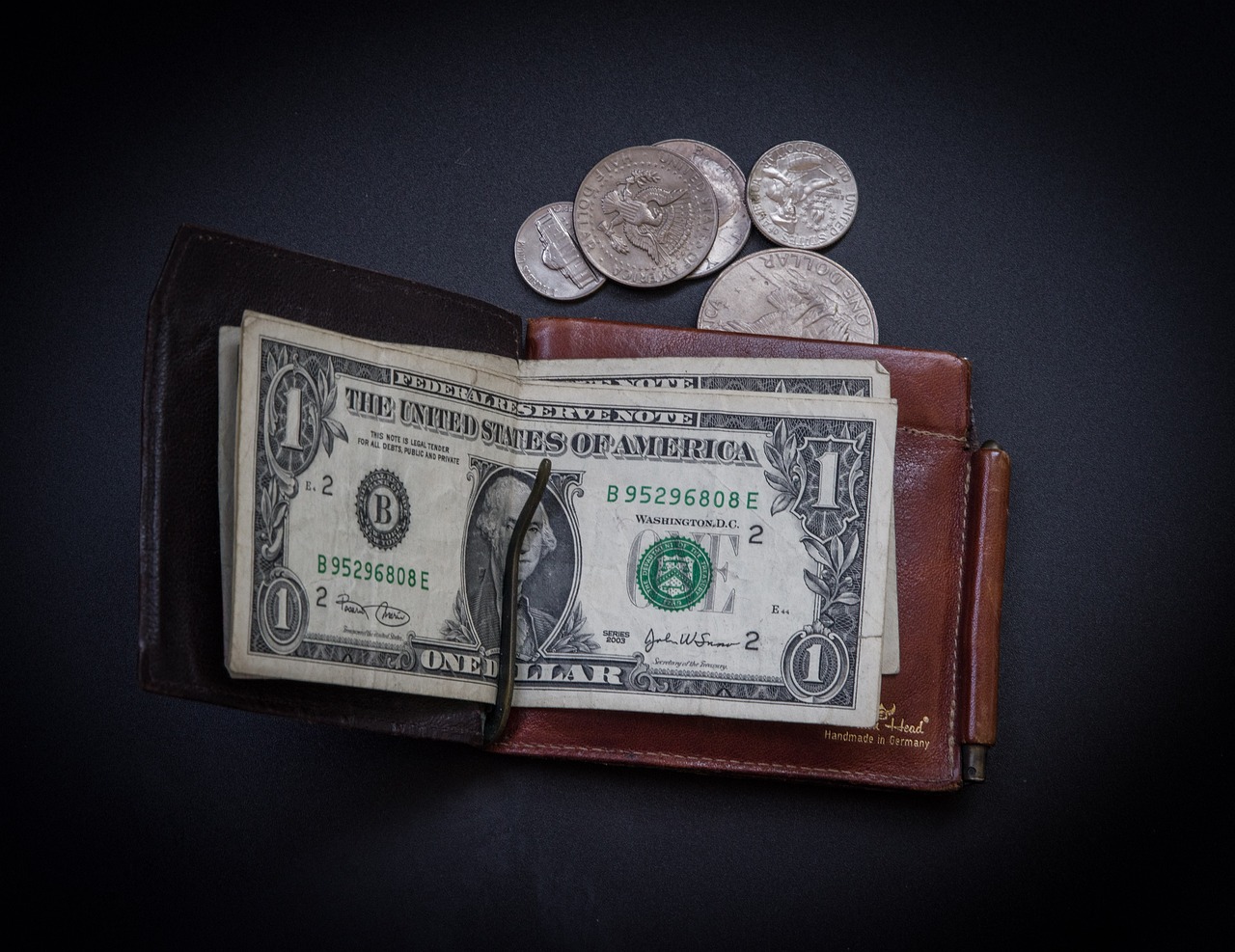
Malware and Keyloggers
In the digital age, where our lives are increasingly intertwined with technology, the threat of malware and keyloggers looms large, especially for cryptocurrency users. These malicious programs can infiltrate your devices, often without your knowledge, and wreak havoc on your digital assets. Imagine waking up one day to find your wallet empty, all because you clicked on a seemingly innocuous link or downloaded a file that turned out to be a trojan horse. Scary, right? That's the reality of malware.
Malware is a broad term that refers to any software intentionally designed to cause damage to a computer, server, or network. It can take various forms, including viruses, worms, ransomware, and spyware. Among these, keyloggers are particularly insidious. These programs are designed to record every keystroke you make, capturing sensitive information such as passwords, credit card numbers, and personal messages. Once they have your wallet password, they can access your funds in the blink of an eye, leaving you with little recourse.
To illustrate the severity of the threat, consider the following statistics:
| Type of Malware | Percentage of Attacks |
|---|---|
| Ransomware | 30% |
| Spyware | 25% |
| Keyloggers | 20% |
| Viruses/Worms | 25% |
As you can see, keyloggers account for a significant portion of malware attacks. So, what can you do to protect yourself? First and foremost, it’s essential to keep your devices updated with the latest security patches. Software developers often release updates to fix vulnerabilities that malware can exploit. Additionally, consider installing reputable antivirus software that can detect and eliminate threats before they compromise your wallet.
Moreover, practicing safe browsing habits can make a world of difference. Be cautious about the websites you visit and the links you click. If something seems off, trust your instincts and steer clear. Remember, the digital world is like a jungle—there are both beautiful and dangerous paths. It’s up to you to navigate wisely.
Finally, consider using two-factor authentication (2FA) for an added layer of security. Even if a keylogger manages to capture your password, 2FA can prevent unauthorized access by requiring a second form of verification. This could be a code sent to your phone or an authentication app. By combining these strategies, you can significantly reduce the risk of falling victim to malware and keyloggers, ensuring your digital assets remain safe and sound.
- What is malware? Malware is software designed to harm or exploit any programmable device or network.
- How do keyloggers work? Keyloggers record every keystroke made on a device, capturing sensitive information.
- How can I protect my wallet from malware? Keep your software updated, use antivirus programs, practice safe browsing, and enable two-factor authentication.
- What should I do if I suspect my wallet has been compromised? Immediately change your passwords, enable 2FA, and consider moving your assets to a secure wallet.

Future of Wallet Encryption
The future of wallet encryption is poised for exciting advancements, driven by the rapid evolution of technology and the increasing sophistication of cyber threats. As cryptocurrencies gain mainstream acceptance, the need for robust security measures becomes ever more critical. Imagine your digital assets as a treasure chest; without a strong lock, it’s all too easy for thieves to make off with your valuables. So, what does the future hold for wallet encryption?
One major trend is the integration of artificial intelligence (AI) into encryption protocols. AI can enhance security by analyzing user behavior and identifying anomalies that may indicate a breach. For instance, if your wallet suddenly tries to log in from a different country, AI could flag this as suspicious activity and prompt additional verification steps. This proactive approach to security could significantly reduce the risk of unauthorized access.
Another promising development is the emergence of quantum encryption. As quantum computing continues to advance, traditional encryption methods may become vulnerable. Quantum encryption utilizes the principles of quantum mechanics to create unbreakable codes, ensuring that your wallet remains secure against even the most powerful computing systems. This technology might sound like something out of a sci-fi movie, but it’s on the horizon and could revolutionize how we secure our digital assets.
Moreover, the adoption of multi-signature wallets is likely to increase. These wallets require multiple keys to authorize a transaction, adding an extra layer of security. Think of it as needing several keys to open a vault; even if one key is compromised, the others still protect your assets. Multi-signature wallets are particularly useful for businesses and groups, as they can distribute the responsibility of securing funds among multiple trusted individuals.
To help visualize these advancements, consider the following table that outlines potential future technologies in wallet encryption:
| Technology | Description | Benefits |
|---|---|---|
| Artificial Intelligence | Uses behavior analysis to detect anomalies. | Proactive threat detection and response. |
| Quantum Encryption | Utilizes quantum mechanics for secure communication. | Unbreakable codes against advanced computing. |
| Multi-Signature Wallets | Requires multiple keys to authorize transactions. | Enhanced security through shared responsibility. |
As we look ahead, user education will also play a crucial role in the future of wallet encryption. With the rise of sophisticated phishing schemes and malware attacks, it's imperative for users to stay informed about potential threats and best practices for safeguarding their assets. Knowledge is power, and in the realm of digital security, being aware of the latest scams and security measures can make all the difference.
In conclusion, the future of wallet encryption is bright, with innovative technologies on the horizon that promise to enhance security and protect our digital assets. As we embrace these advancements, it’s essential to remain vigilant and proactive in our approach to security. After all, in the digital world, the only thing more valuable than your assets is the peace of mind that comes with knowing they are secure.
- What is wallet encryption? Wallet encryption secures a digital wallet using cryptographic techniques to protect cryptocurrencies and sensitive information.
- Why is wallet encryption important? It protects digital assets from theft and unauthorized access, ensuring the security and integrity of cryptocurrencies.
- What are common wallet encryption methods? Common methods include symmetric and asymmetric encryption, as well as the use of hash functions.
- How can I enhance my wallet security? Use strong passwords, keep software updated, and be aware of phishing attacks and malware.
Frequently Asked Questions
- What is wallet encryption?
Wallet encryption is a security measure that uses cryptographic techniques to protect your digital wallet. It ensures that only authorized users can access their cryptocurrencies and sensitive information, acting like a lock on a safe.
- Why is wallet encryption important?
Encryption is essential for safeguarding your digital assets from theft and unauthorized access. Think of it as a shield that protects your valuables; without it, your cryptocurrencies are vulnerable to various threats.
- How does encryption work?
Encryption works by transforming your data into a secure format that can only be read by someone with the correct decryption key. This process ensures that even if someone intercepts your data, they won’t be able to understand it without the key.
- What are symmetric and asymmetric encryption?
Symmetric encryption uses the same key for both encryption and decryption, while asymmetric encryption uses a pair of keys—one public and one private. Each has its own applications in wallet security, providing different levels of protection.
- What role do hash functions play in wallet encryption?
Hash functions are crucial in wallet encryption as they securely store passwords and verify data integrity. They create a unique fingerprint of your data, ensuring that even if someone accesses the hashed data, they can’t reverse-engineer it back to the original.
- What are the common methods for wallet encryption?
There are various methods for encrypting wallets, including software-based encryption, hardware wallets, and multi-signature wallets. Each method has its own strengths and weaknesses, so it’s essential to choose one that fits your needs.
- What are some best practices for wallet security?
To enhance wallet security, always choose strong passwords, keep your software updated, and enable two-factor authentication. These practices can significantly reduce the risk of unauthorized access to your digital assets.
- What are the potential risks associated with wallet encryption?
Despite encryption, digital wallets can still face risks such as phishing attacks and malware infections. Being aware of these threats and implementing protective measures is crucial for safeguarding your assets.
- How can I protect myself from phishing attacks?
To avoid phishing attacks, always verify the source of any communication asking for your wallet information. Educate yourself about common scams and use security tools that can help identify suspicious links.
- What is the future of wallet encryption?
The future of wallet encryption is likely to see advancements in technology, making encryption methods more robust. Emerging trends like biometric authentication and decentralized security solutions may play a significant role in enhancing digital asset security.







